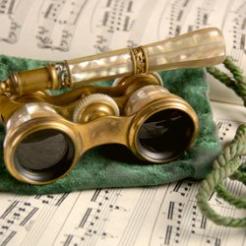Government match funding schemes for the arts and higher education are all well and good, but do they give those causes an unfair advantage over others? Mark Astarita thinks so.
Early last December the Culture Secretary, Jeremy Hunt, announced an £80m match funding scheme to encourage private giving to arts organisations, and launched a review “to encourage philanthropy across the whole of government”.
On the face of it a match scheme that encourages giving to the arts should be applauded, but could it make fundraising for mainstream charities even harder?
This now means that both higher education (which already has a government-funded match scheme) and the arts have a competitive advantage in attracting donors of all kinds – and major donors especially – over say cancer, children and overseas aid charities.
Ministers need to take care that they are even-handed in their approach to charities and do not create a distorted and subsidised marketplace for some with unintended consequences for many as a result.
It might seem neat to incentivise donors but to do so for some and not all could be seen to be unfair. Higher education and now the arts are being treated as special cases. It would take a very discerning donor torn between two wonderful causes to not back the one which will see their donation doubled for free. Two-for-one has now entered charity fundraising propositions.
But we know that arts and higher education already have an advantage when it comes to securing major donor philanthropy, both in our own growing market and in the US.
Beth Breeze of Kent University produced an excellent report on UK million-pound donors last year. She found that 37 per cent of million-pound gifts (a tidy £575.4m) went to higher education and the arts was the next most popular donation target, attracting 8 per cent of all million-pound gifts.
So it’s fair to say when it comes to major donors, arts and education does rather well already and very similar to American donors.
Research by the Heritage Foundation points very clearly to the fact that in the US the well-off tend to favour upper-middle class causes. Upper-income individuals in the US are more likely to give to the arts and humanities, environmental causes and educational institutions while lower-income individuals tend to give to religious congregations and human service groups.
The average income for donors to the arts and humanities in the US (1993) was $56,535 while the average income of donors to religious organisations was $40,923. If you’re poorer you’ll give to your church and if you’re richer you’ll give to your university or opera house. The research might be a bit dated but I would bet my fundraiser’s shirt on it being still fairly accurate. Put another way, an individual donor in the US earning over $60,000 per year is seven times more likely to contribute to the arts and humanities than a donor earning less than $20,000 per year; donations to educational institutions are 4.3 times more likely to come from wealthier individuals says the Heritage Foundation.
None of this giving is bad or wrong, in fact far from it. Donors must be allowed to give to their favourite cause and freedom to do so is a fundamental building block to a richer civil society. What we need to take care of is that through the tax system or via government additionality, we do not favour one cause over another especially when some causes already seem to have some built-in advantage amongst the better-off.









